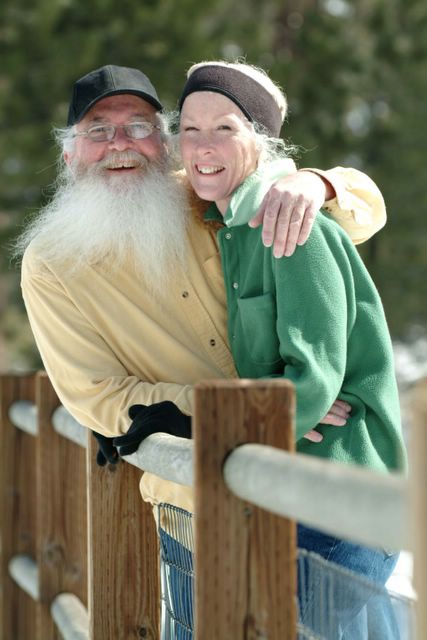Western Tiger Swallowtail
Papilio rutulus
 Click on photo to enlarge - © 2008 jim otterstrom
Click on photo to enlarge - © 2008 jim otterstrom
I love how this Western Tiger Swallowtail is embracing the Rose Sage (Salvia pachyphylla) flower with its right fore-leg while drinking up nectar through it's straw-like proboscis. Enlarge to see details
~
Three Beauties Feeding on Rose Sage Nectar
 Click on photo to enlarge - © 2008 jim otterstrom
Click on photo to enlarge - © 2008 jim otterstrom Some years ago I was in our local birdwatcher store, Wild Wings, browsing through a book on butterflies when a wrinkled little woman, well into her 90s, came up to me and gently placed a feeble hand on my arm.
Looking me in the eyes, and obviously a bit distraught, she asked me what had happened to Big Bear's butterflies.
The old gal had grown up here, moving away decades ago, and was back with relatives revisiting her childhood home for the first time.
She told me that when she was a little girl, during every summer, the entire valley would be aswarm with a mass of butterflies and she couldn't understand why they weren't here in those numbers anymore.
Her remembrance created a wondrous picture in my imagination but the urgency in her question caught me off guard, and before I could respond, the relatives came and whisked her away.
It was one of those moments that stick vividly in my heart, and I wondered how much of her memory was idealizing the place of her childhood, and how much was reality.
Since then, I've often thought of all the square miles of our high-mountain Bear Valley meadows which have been replaced by roads, lodges and ski resorts, shopping centers, homes, small businesses, the golf course and the airport. I think about weed abatement regulations and how much of the wild flora in the valley is now cut to the ground just as spring is unfolding.
And, I remember the Mourning Cloak (Nymphalis antiopa) butterfly I saw laying eggs on a willow branch in Rathbun Creek. I was cleaning litter out of the creek channel one spring, as part of a community project, when I noticed yellow-fringed wings slowly folding and unfolding just a few inches in front of my eyes.
The butterfly seemed oblivious to my presence as she meticulously deposited dozens of tiny eggs, one at a time, in a spiral pattern around the branch of the willow (click here and scroll down to see a Mourning Cloak laying her eggs).
I watched with fascination until she was finished laying her eggs, making a mental note of the willow's exact location, and planned on coming back regularly to monitor the progress of the eggs.
Two days later I discovered that all the willows along Rathbun Creek had been cut to the ground by a giant weed-whacking machine, the branches chipped, shredded, and hauled away.
My thoughts then drifted sadly upstream and down, wondering how many millions of insect eggs, butterfly and otherwise, were lost through our obsessive/compulsive meddling in Rathbun Creek alone.
One of the primary purposes of Earth Home Garden is to provide habitat for the native species of Big Bear, and to expose other people in our community to the joy and ecological benefits of gardening with native plants. The number and variety of birds & butterflies visiting our garden seems to increase with each passing year.
Labels: community involvement, conservation, ecology, garden, insects, observations, pollinators, progress?, San Bernardino Mountains, spring, wildlife




























